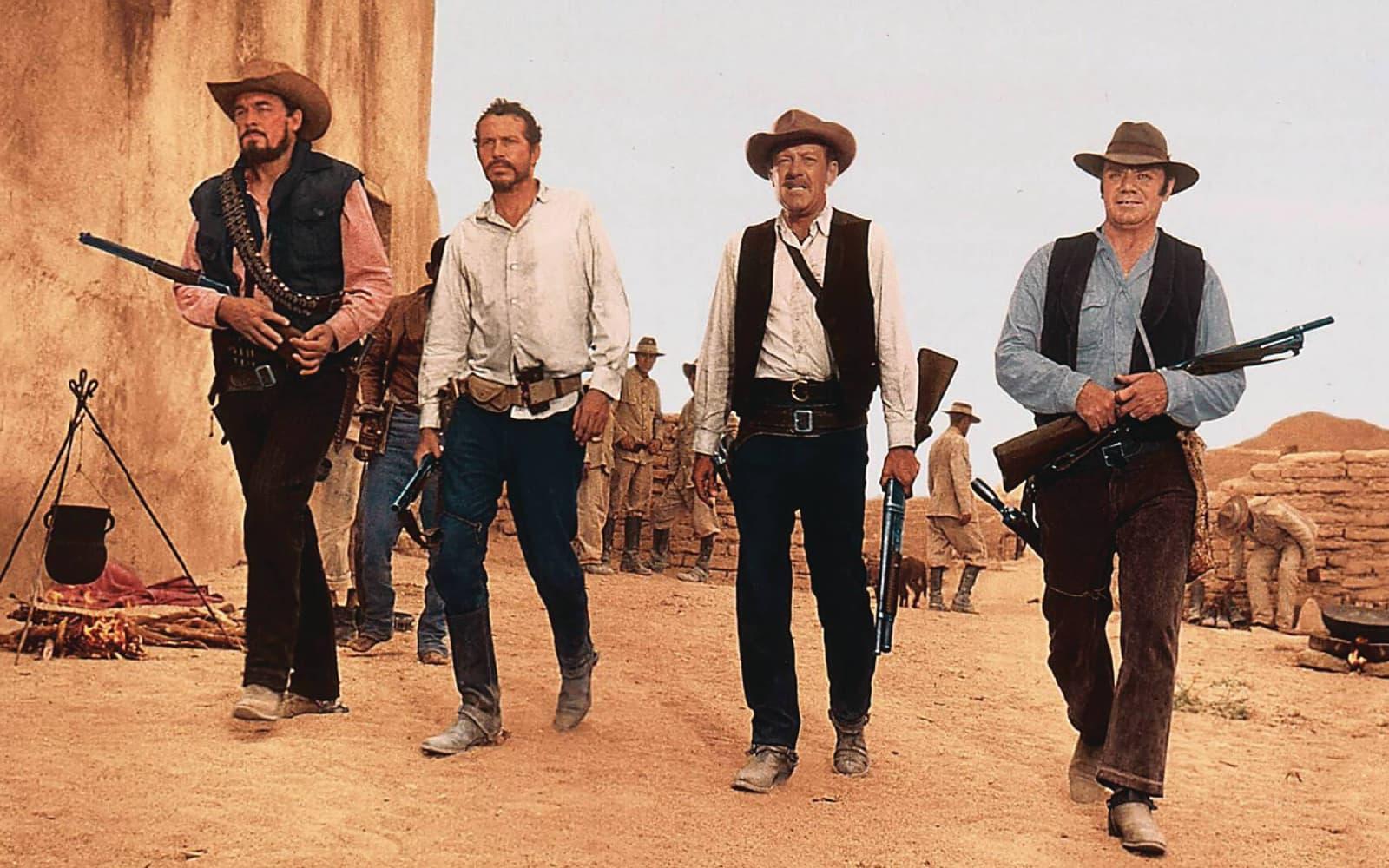
Inspired by a recent tweet from @BluVoltVA, here’s a list of some of my favorite tropes used in movies, TV shows, and video games. Despite seeing them all numerous times, I still get a thrill and a sense of satisfaction whenever they pop up on the screen. In no particular order:
The bad-ass slow-motion walk (with the requisite bad-ass theme music playing, natch). When this happens, you know the shit’s about to get real. Bonus points if the characters’ clothing (e.g., trench coats, scarves) flare out behind them in dramatic fashion. Examples include: Guardians of the Galaxy, The Wild Bunch, Reservoir Dogs, Swingers.

The “gear up” montage. This occurs when our heroes inventory and load up all of their gear and weapons before the big mission, expedition, or heist. Bonus points if they have to improvise a lot of their gear à la MacGyver and/or they’re going on a suicide mission that not everyone’s expected to survive. Examples include: Commando, Hot Fuzz, and Predator.

Heroes resigning themselves to their fate. Speaking of suicide missions, I love it when our heroes grimly realize that they’re all about to die, but go to meet their fate head-on anyway because they’re heroes, dammit, and that’s what heroes do. The Wild Bunch is arguably the best example of this (although the characters in question aren’t exactly heroes), but other examples include Hero and Loki.

Bad guys who have an honorable streak. The villain’s done some terrible things and clearly has few scruples. But they do have some scruples and surprisingly, refuse to cross a certain moral line (e.g., shoot the hero when they’re down, harm an innocent). This is often done to make the film’s real villain look even worse and more dastardly. Examples include: Hard Boiled, The Man From Nowhere, and The Rocketeer.

When the good guys and bad guys are more alike than they realized. This usually occurs because both hero and villain are lone wolves, have a peculiar code of honor, and share a similar worldview. Bonus points if one of them actually says that they wished they’d met in another life so they could be friends. Examples include: Most of John Woo’s “heroic bloodshed” movies (e.g., The Killer, Hard Boiled), and Halo’s Master Chief and Arbiter.

Bad-ass characters who just want to live a peaceful life but are forced to return to their old (i.e., bad-ass) ways. Bonus points if the character was living by themselves in the wilderness. The John Wick movies are the best example of this in recent history but other examples include The Foreigner, The Karate Kid, and Yoda.

When a secondary character finally gets their moment to shine. They could be the laughingstock most of the time, but when they’re needed, they step up and amaze everyone with their skills. Examples: Radar from M*A*S*H and Benny from The Lego Movie.

Anthropomorphizing vehicles. One of my favorite examples of this occurs in the series premier of Star Trek: The Next Generation, when Bones reminds Data to treat the Enterprise “like a lady.” Other examples include The Hunt for Red October and the “Lucky 13” episode in Love, Death & Robots.

The above list is just the tip of the iceberg, of course. For more tropes, check out TVTropes.org (aka, the all devouring pop-culture wiki).